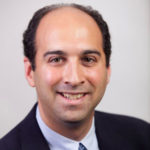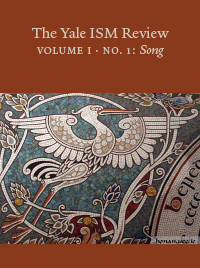Judah M. Cohen
Ask directors of amateur Jewish choral societies to name great pieces of “Jewish music.” Chances are, their answers will include several psalm settings: from selections of Salomone Rossi’s 1622–23 Songs of Salomon, to Louis Lewandowski’s 1870s showpiece arrangement of Psalm 150, psalm settings by prominent Israeli composers such as Tzvi Avni and Yehzekel Braun, Leonard Bernstein’s 1965 Chichester Psalms (Pss. 100, 108, 2, 23, 131, 133), Robert Starer’s Psalms of Woe and Joy (Pss. 6, 136, 148), Benjie Ellen Schiller’s Psalm 150, and even, as a crossover curiosity, Franz Schubert’s late 1820s setting of Psalm 92. Featuring Hebrew texts, these settings connect singers with traditional canons of Jewish knowledge. At the same time, they represent “art” as long-form examples of melody, harmony, and form.
Ask congregants what psalms they know from the liturgy. Some might offer numbers (150, 145, 92, 23), or substitute Hebrew names (“Halleluyah,” “Ashrei,” “Mizmor Shir”/”Tzaddik Katamar,” “Hashem Ro’i”); some might identify specific liturgical moments for introducing sets of psalms (Kabbalat Shabbat, P’sukei D’Zimrah, Hallel). But to most, psalms instead integrate deeply into Judaism’s ritual fabric: as a spiritual “warm-up,” as part of the liturgy’s emotional trajectory, as spiritual sustenance when preparing a body for burial, as a marker of spiritual time, as a medium for private reflection. For most worshipers, psalms are one part of a multilayered liturgy, alongside prayer texts, biblical and rabbinic writings, praise songs (piyyutim), and vernacular-language readings. Worshipers include psalms in their musical knowledge, whether in near-silent prayer, lined-out, read in interpretive translations, or sung with full-throated melodies. But, for the most part, Jewish worshipers don’t “sing psalms.” Rather, they pray, using all of the textual and musical sources available to them in a single worshipful package.
In my years of studying cantors, I have seen the psalms receive respect as part of a larger body of Jewish prayer materials. But I don’t recall hearing students or cantors give the psalms their own category, or hearing the psalms singled out as a unique genre within Jewish worlds of music.
Look closer in all of these settings, and you’ll see an internally consistent system at work. The act of singing psalms in concert offers a means for Jews to connect to broad social and spiritual conversations. In 1963, Washington, D.C. cantor Sholom Katz led a “Choir of Cantors” on a two-LP album of psalm settings, where he noted that “the Psalter has become the hymnbook of humanity because it is an inexhaustible and indispensable expression of the human spirit.” Fifty years later, the Zamir Chorale of Boston released its album Psalmsensation, presenting prominent psalm settings by Jewish composers alongside settings by William Billings, Charles Ives, and other international artists, to create “a multiethnic concert experience.” Follow many of these same singers into personal and communal prayer settings, however, and the psalms will change their role accordingly. Such is the flexibility of a canonical text, both liturgically and musically. Through whispering or recitation, monophonic or choral singing, Jews thus mediate the psalms’ foundational place in Judeo-Christian tradition with their own specific traditions of spiritual practice.
 Judah M. Cohen is Lou and Sybil Mervis Professor of Jewish Culture and Associate Professor of Musicology at Indiana University. He has authored The Making of a Reform Jewish Cantor: Musical Authority, Cultural Investment, and Sounding Jewish Tradition: The Music of Central Synagogue. Recent publications include the “Jewish Music” article in the second edition of the Grove Dictionary of American Music, and the Music entry for Oxford Bibliographies in Jewish Studies. He is currently at work on a study of World War II-era narratives in musical theater.
Judah M. Cohen is Lou and Sybil Mervis Professor of Jewish Culture and Associate Professor of Musicology at Indiana University. He has authored The Making of a Reform Jewish Cantor: Musical Authority, Cultural Investment, and Sounding Jewish Tradition: The Music of Central Synagogue. Recent publications include the “Jewish Music” article in the second edition of the Grove Dictionary of American Music, and the Music entry for Oxford Bibliographies in Jewish Studies. He is currently at work on a study of World War II-era narratives in musical theater.
____
This article is licensed under a Creative Commons Attribution 4.0 License.
Recommended Citation: Cohen. Judah M. (2014) “Great Art and a People’s Music,” The Yale ISM Review: Vol. 1: No. 1, Article 9.
Available at: https://ismreview.yale.edu/
View article as a PDF: Great Art and a People’s Music
